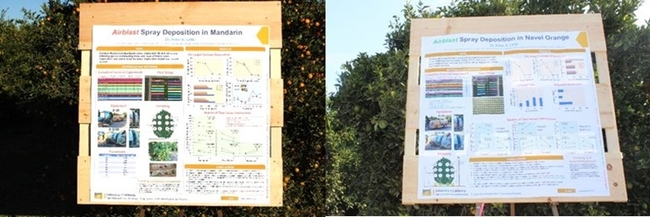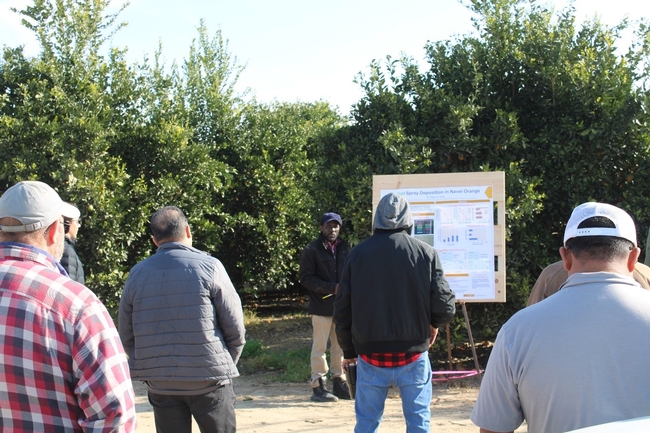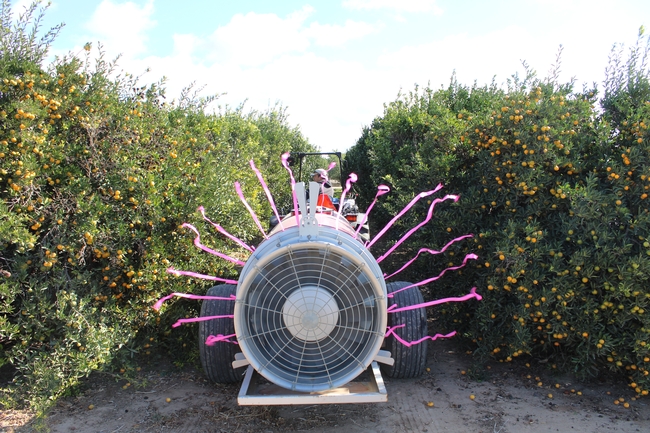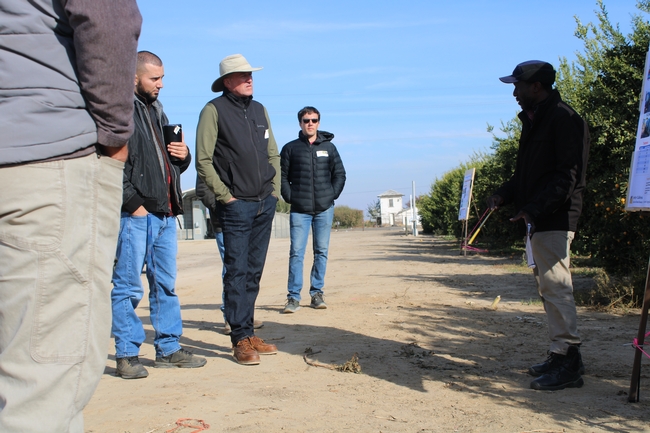Upon attending the Citrus Spray Field Day in November 2022 at the Kearney Agricultural Research and Extension (KARE) Center, 93% of participants reported learning much or very much about spray application best practices, which can lead to increased agricultural efficiency.
The Issue
Because of the complex nature of spray application under field conditions, growers and pesticide applicators have difficulty in recognizing or using best practices that result in desired application efficiencies. Therefore, applications often fall short. Developing and disseminating science-based recommendations from field trials and decision support tools to assist with pesticide spray application decisions will reduce the guesswork, improve efficiency, and promote effective pest control.
How UC Delivers
The Citrus Spray Field Day was a 4-hour classroom and field meeting that discussed pesticide application effectiveness, focusing on axial airblast spray applications directed to citrus (and other tree and vine) canopies. It was instructed by Dr. Peter Ako Larbi with support from hisAgricultural Application Engineering (AgAppE) Lab andKARE Center personnel. Discussions covered techniques and considerations for optimizing spray deposition and coverage as well as for minimizing pesticide drift. Sixteen participants were in attendance consisting of growers, applicators/operators, pest control advisers/certified crop advisors, regulators/policymakers, scientists/researchers, and others.
Starting with classroom instruction, it covered “Welcome, Introduction, and Purpose” and “Introduction to ‘Airblast Spray Advisor' decision support tool”, transitioning to field instruction which included “Airblast spray demonstration”, “Spray deposition in mandarin” and “Spray deposition in navel orange”. Continuing back in the classroom with sessions on “Spray drift potential in citrus applications” and “Evaluating ‘Airblast Spray Advisor' deposition predictions”, Citrus Spray Field Day ended by evaluating participant learning with approximately 94% response rate.

The Impact
The participants were fully engaged throughout the training. Overall, those who reported gaining “much” to “very much” learning are as follows: 87% for “Welcome, Introduction, and Purpose”; 80% for “Introduction to ‘Airblast Spray Advisor' decision support tool”; 87% for “Airblast spray demonstration”; 93% for “Spray deposition in mandarin”; 94% for “Spray deposition in navel orange”; and 87% in “Spray drift potential in citrus applications”. On average, about 85% reported learning gains in the classroom portion and about 91% reported learning gains in the field. Overall, 93% reported “much” to “very much” learning for the entire field day, showing that the training was very effective and provided participants with a great amount of learning.
Dr. Larbi and his AgAppE Program plan to continue providing similar trainings in the future on both ongoing and need bases to arm his clientele with science-based knowledge that will promote their operational efficiency and profitability.


